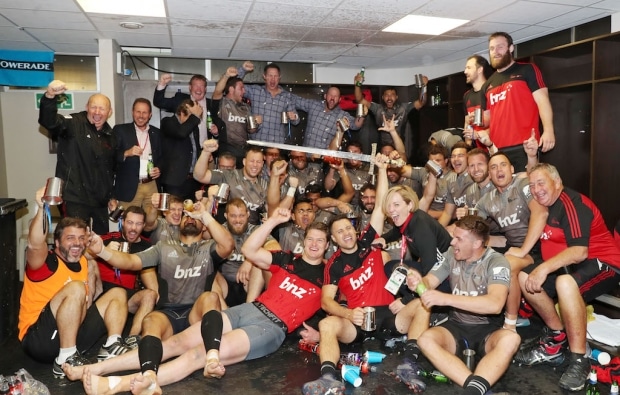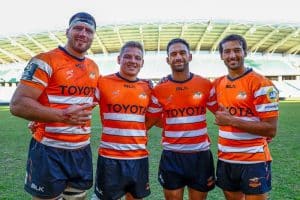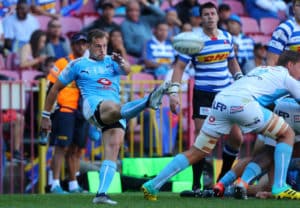A stale Super Rugby competition remains desperately in need of a new injection of life, writes CRAIG LEWIS.
This week, Sanzaar is expected to release a strategic report that will detail the options being considered to revamp Super Rugby once the current broadcast deal expires at the end of 2019. It presents an opportunity for change that is much needed.
The product of Super Rugby has undoubtedly improved this year with the reduction of teams from 18 to 15, but it remains miles away from the perfect model.
This past weekend, the Hurricanes and Highlanders clashed in a highly-anticipated New Zealand derby, but only a paltry crowd turned up to witness a so-called All Blacks ‘trial’ match at the Westpac Stadium.
Over in Australia, there generally appears to be a passing interest in the competition, while the crowds in South Africa continue to dwindle.
Unfortunately, this week’s Sanzaar report is expected to exclude any prospect of a strength-versus-strength round-robin format that proved to be so popular between 1996 and 2010.
The sad fact is that the desire for expansion and the need to enhance financial gains saw the tournament organisers break the cardinal cliché of ‘if it ain’t broke, don’t fix it’.
It means that the highly successful Super 12 and Super 14 formats – where each team played each other at least once – were done away with as the likes of the Rebels, Kings, Jaguares and Sunwolves were all added to the competition.
Last year, Sanzaar acknowledged that the competition needed to be condensed, and as a result, the Kings, Cheetahs and Force received the axe. It was a move that sparked plenty of controversy, but it was undoubtedly the correct decision.
The removal of the Force has strengthened Australia’s player pool, and boosted the competitiveness of surviving side, the Rebels, who have emerged as the top performing Aussie team under the guidance of former Force coach Dave Wessels.
Unfortunately, from a South African perspective, the axing of the Kings and Cheetahs has done little to boost the remaining Super Rugby franchises as those teams were instead sent into the Pro14 competition.
It’s a move that has had certain benefits, but it’s also been a missed opportunity for top players from the Kings and Cheetahs to filter into the four Super Rugby sides and strengthen SA’s challenge in the top tournament.
Instead, we see three out of four of the South African sides currently dwelling in the bottom half of the overall standings after six rounds of Super Rugby. It doesn’t look good, and the inconsistency in performances and playing styles has to be a cause for concern at national level.
ALSO READ: Super slump a worry for Boks
When one considers the state of the game and the diminishing status of Super Rugby, one would hope that Sanzaar considers making decisive changes that breathe new life into the competition from 2020. Yet, that’s unlikely to take place.
The conference format and need for extensive derbies appear to be an entrenched position in terms of financial viability, while it seems certain that there will be no further reduction in teams.
It’s a difficult prospect to stomach when one objectively considers the limited success and competition value that the Jaguares and Sunwolves have added to the tournament since their inclusion. Similarly, can South Africa and Australia really justify fielding four Super Rugby teams in the long term?
As it is, South Africa’s player resources continue to be drained to overseas clubs – over 400 are now plying their trade abroad – while rugby union continues to battle for relevance in a saturated Australian sports market.
The talk is that the revamped competition may take more games to neutral venues from 2020 as they look to spread the game into new territories and markets. That’s all fine and well from a money-making perspective, but I’d doubt it would serve to reignite the passion of Super Rugby-weary supporters in the Sanzaar nations.
If the quality of competition was the only priority, surely the Jaguares and Sunwolves would be shown the door. Perhaps they could even be demoted to a promotion-relegation tournament along with the likes of the Force, Kings, Cheetahs and the worst-performing Super Rugby side.
Add a Pacific Island team and perhaps a prospective competitor from the USA to such a ‘second tier’ tournament and things could get really interesting.
Such drastic changes will surely remain outside the realms of possibility, but one has to question whether this week’s Sanzaar report will effectively address the problems at the core of a depreciating Super Rugby brand. Sadly, it’s doubtful.
ALSO READ: Super Rugby Power Rankings (Round 6)
Photo: Gavin Barker/BackpagePix





